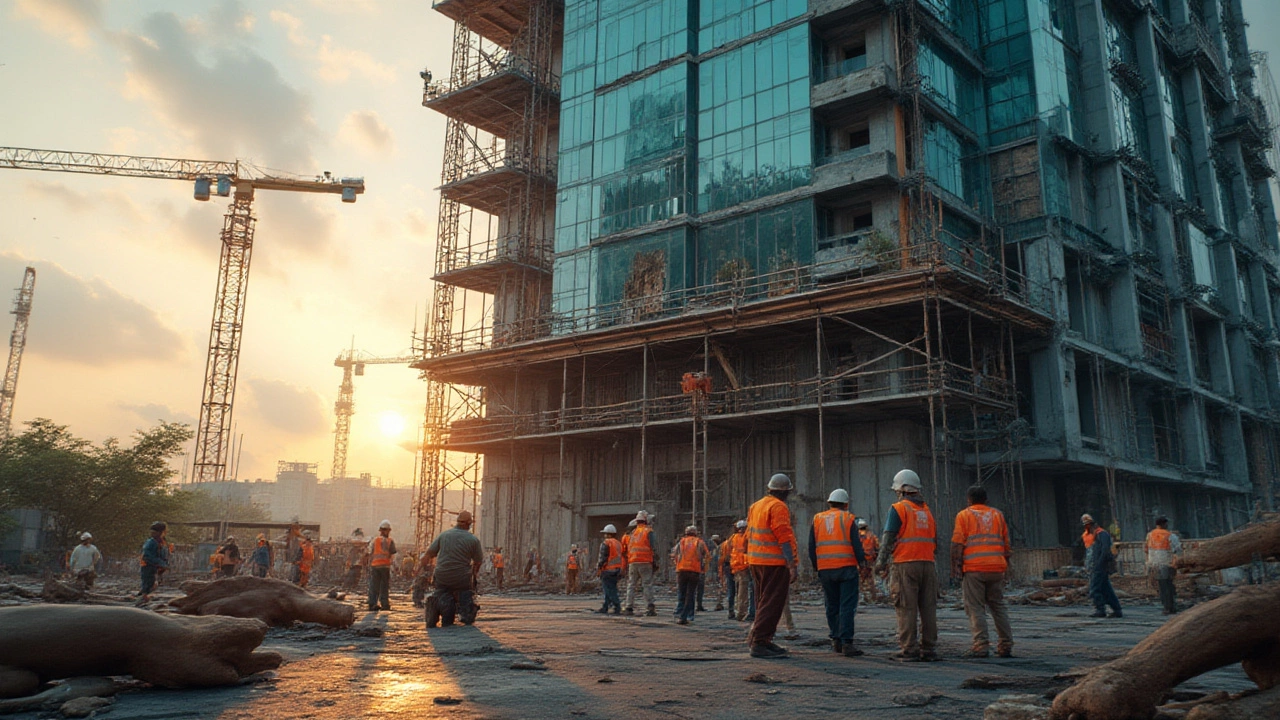Construction Types: Understanding the Choices That Shape Your Build
When working with construction types, the classification of building methods based on structure, material, and purpose. Also known as building types, it guides planners and homeowners to select the right system for durability, cost, and climate.
One of the first decisions in any project is the foundation, the lower part of a structure that transfers loads safely to the ground. Whether you go for a shallow spread footing, a deep pile system, or a raft slab, the foundation sets the load‑bearing capacity and informs the rest of the construction type. The classic "1‑3 rule" in construction, for example, tells you the footing width should be at least one‑third of the wall thickness for stability. Getting this right avoids costly cracks later, which is why many DIY guides stress a solid base before any walls rise.
Once the foundation is in place, the next big piece is the roofing, the protective covering that shields the interior from weather and contributes to energy efficiency. Roofing options—metal sheets, clay tiles, concrete slabs, or green roofs—each bring a different weight, insulation value, and maintenance schedule. In regions with heavy rain, a steep pitch helps water run off quickly, while in hot climates a reflective metal roof cuts cooling costs. Understanding how roofing choices interact with your chosen construction type ensures the load path remains balanced and the building stays comfortable year‑round.
Behind the scenes, architectural services, professional planning, design, and documentation that translate ideas into buildable plans act as the glue that ties all decisions together. A well‑written architectural brief clarifies the project’s goals, constraints, and required performance standards. It tells the engineer which foundation system aligns with the soil, which roof design meets local codes, and how the overall construction type fits the budget. When the brief is clear, contractors can quote accurately, and homeowners avoid surprise costs.
How Construction Types Influence Cost, Speed, and Sustainability
The choice of construction type directly impacts the building cost and timeline. A prefabricated steel frame goes up faster than a traditional brick‑and‑mortar wall, but the material price may be higher. Conversely, a mud‑brick system uses local resources, lowering material spend but often extending labor time. Modern solar‑ready designs incorporate insulated concrete forms (ICFs) that boost energy performance, yet require skilled installers. By mapping the trade‑offs—material cost, labor skill, local climate—you can pick a type that meets both budget and performance goals.
Beyond numbers, construction types also shape how sustainable a home can be. Earth‑bag walls, rammed earth, and reclaimed timber all reduce embodied carbon compared with conventional concrete. Pair those with a breezy roof ventilation system and a low‑impact foundation, and the entire building becomes a net‑positive asset. Many green building guidelines, like LEED or GRIHA, reference these choices as key credits, so understanding each type helps you earn certification without extra hassle.
In practice, you’ll encounter a mixture of types on a single project. A duplex might use a concrete slab for the ground floor, timber framing for the upper level, and a metal roof for durability. The blend reflects site conditions, owner preferences, and cost targets. Recognizing how each component interacts—foundation supporting walls, walls supporting roof, roof protecting interior—creates a cohesive system that stands the test of time.
Below you’ll find a curated set of articles that dive deeper into each piece of the puzzle. From the practical 3x4 kitchen rule to negotiating with landscapers, from DIY foundation crack repair to understanding the 1‑3 rule, these guides give you actionable tips to apply the concepts we’ve outlined. Browse the collection to see real‑world examples and step‑by‑step advice that will equip you to make confident decisions on your next build.
